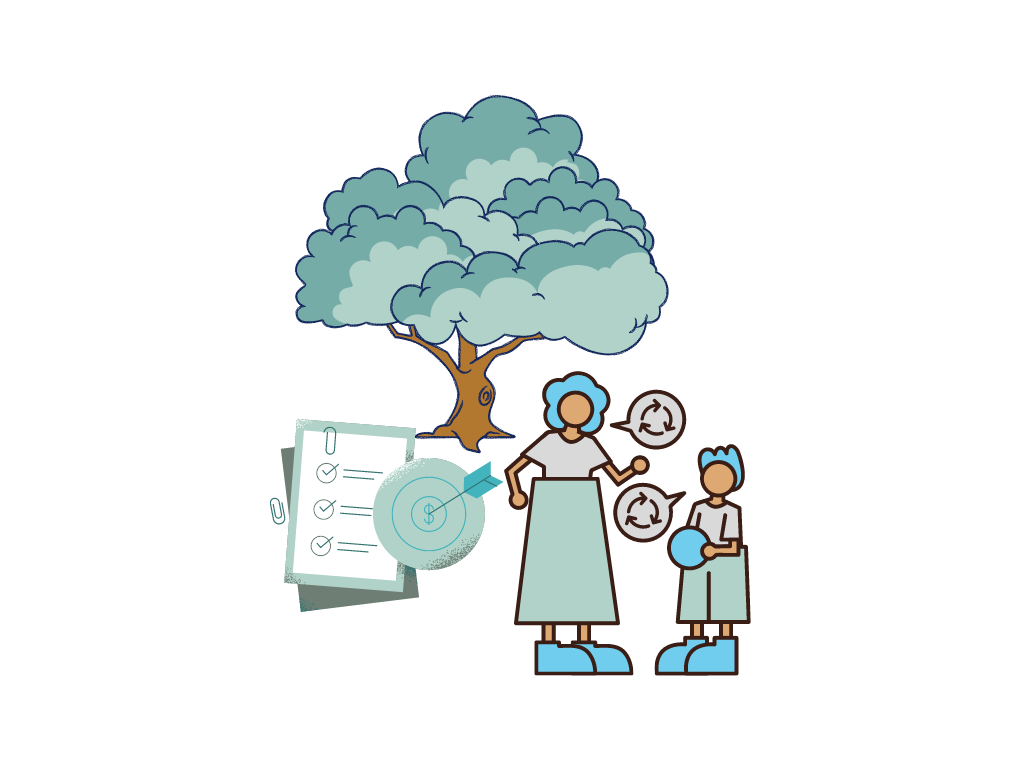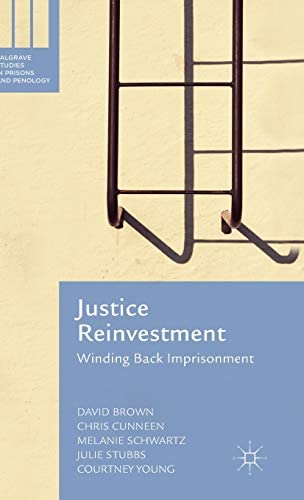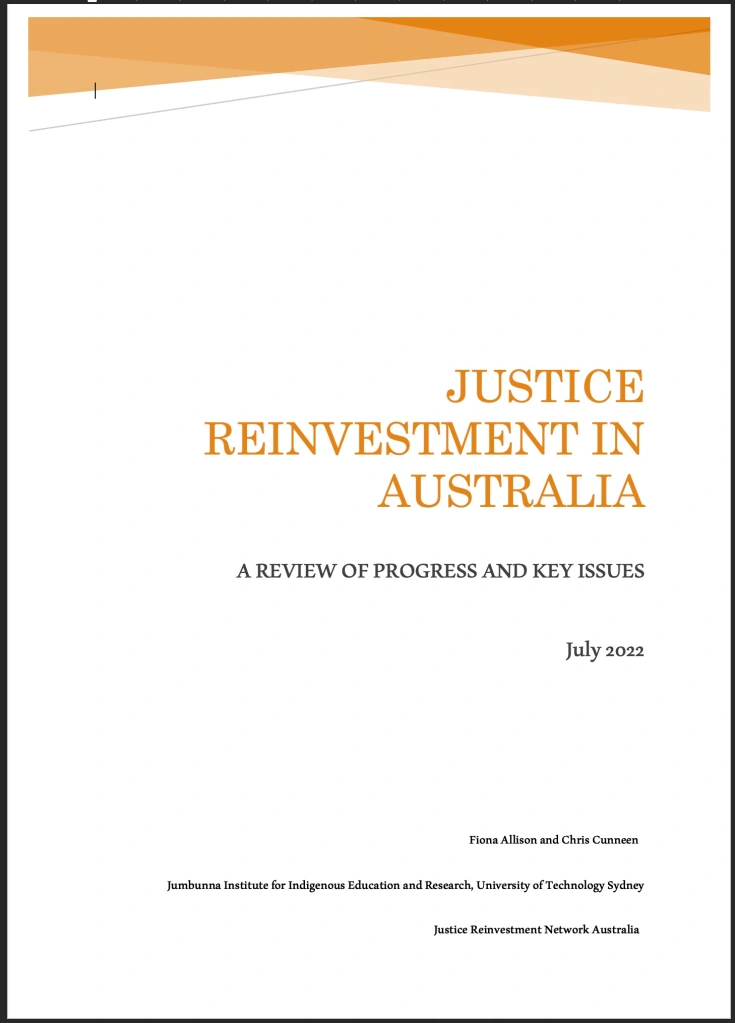Justice reinvestment is a way of working that shifts power and decision making to First Nations communities to self-determine the best way to improve justice outcomes in their community. It works by bringing together local First Nations people to share data, evidence, their lived experiences and expertise to design and develop a holistic justice response that is unique to their local community.
Although the specific priorities of each community may vary each justice reinvestment initiative will commonly adopt a life course approach to crime by focusing on early intervention and prevention in intersecting areas of justice. These may include but are not limited to policing, health, housing, education, employment, family support along with access to culture and language. Whilst working primarily at the local level justice reinvestment also provides communities with the tools to advocate their experiences into broader calls for systems change including within service delivery and law or policy reform.
Looking to speak with someone about justice reinvestment and your community?
You can get more information, including about the current funding rounds to support justice reinvestment initiatives, from the free Justice Reinvestment Helpdesk by contacting:
Phone: 0460 036 155
Email: jrhelpdesk@nintione.com.au
Hear some of the stories shared by the First Nations people from Moree, Mt Druitt and Bourke about how justice reinvestment is making an impact in their community.
Our website offers a range of resources to expand your understanding of justice reinvestment and how it operates in different jurisdictions. These are available on our resources page.
We also provide up to date information on how the Australian Government is partnering with First Nations communities to progress justice reinvestment nationally. These updates are available on our community-government partnerships page.
How does Justice Reinvestment operate?
Justice Reinvestment is not an off the shelf ‘program’, it is principled and data-driven approach to resolving criminal justice issues that is custom designed and implemented by communities directly affected by the criminal justice system. Justice Reinvestment work progresses at the pace of community and requires a fundamental shift in power from government and service providers to community. It also requires a shift in accountability for outcomes. Often criminal behaviour and the underlying drivers of crime are symptoms of a system that has failed to listen to the needs and interests of those it is set up to serve.
Reflecting the self-determined nature of Justice Reinvestment, this way of working will look different in every community as the Justice Reinvestment approach works to address local issues at the local level. As a guiding principle, the typical stages of a JR approach are stepped out below.

1 Readiness for Justice Reinvestment
- Data demonstrating extensive contact with the criminal justice system (this includes bureaucratic such as crime stats, alongside community data such as storytelling)
- An urgency and readiness for change amongst community members and key stakeholders
- Capability for change such as access to resources and sufficient local infrastructure

2 Exploring what Justice Reinvestment might look like
- Extensive community and youth engagement
- Data collection
- Asset-mapping
- Exploring and implementing immediate opportunities for change
- Determining priorities and creating a shared vision for change
- Building partnerships and strengthening local infrastructure

3 Implementing Justice Reinvestment
- Implementing the shared vision for change
- Breaking down silos
- Designing and implementing collaborative projects which further the shared vision for change
- Developing a framework for monitoring, evaluating and learning from the work
- Building local leadership and governance by shifting power from government and services back to community
- Training and development of skills
- Elevating local expertise into policy and law reform

4 Self-governance and sustainability
- Focusing on the sustainability of independent community self-governance structures
- Exploring and implementing what ‘reinvestment’ looks like for the community
- Achieving permanent power shifts from government to community
- Accountability of government and service providers
What are the challenges of a Justice Reinvestment approach?
Justice Reinvestment combines modern, western approaches with ancient First Nations and other non-western approaches to develop more robust, human-centric approaches to justice. Each community will experience their own challenges and with this, new opportunities to work in a smarter, more integrated way. These challenges can include:
- Accessing flexible and sustainable funding and reinvestment models
- Shifting decision-making power and accountability
- Balancing the roles of community and government
- Committing to long-term change
- Operationalising Indigenous Data Sovereignty and Indigenous Data Governance
- Balancing a flexible and adaptable approach with robust measurement and evaluation
- Resolving differences in opinions and approaches
There are many case studies which demonstrate how these challenges have led to the development of more responsive and robust ways of working. Some are included below
How was Justice Reinvestment originally conceived?
In 2003, the term ‘Justice Reinvestment’ was coined by United States researchers Susan Tucker and Eric Cadora. Their publication ‘Ideas for an Open Society: Justice Reinvestment‘ is available here. They advocated for Justice Reinvestment as a geographic approach to reducing the number of people in the prison system by investing funds drawn from the corrections budget into communities that produce large numbers of prisoners. This approach aims to address local issues at the local level shifting justice accountability and funds to local authorities to spend on programs in education, health, employment, training, rebuilding human resources and physical infrastructure such as schools, healthcare facilities, parks and public spaces.
How has this approach to Justice Reinvestment changed over time?
The concept has since been reimagined by other jurisdictions, each differing conceptually and methodologically over time. For instance
In the United States
The place-based focus to reinvestment has been overtaken by the enactment of legislation aimed at correctional reforms mainly in the form of probation and parole schemes.
In the United Kingdom
Justice Reinvestment is a catch all term covering payment by result schemes and Social Impact bonds.
In Australia
There is a strong emphasis on locally-led justice initiatives which prioritise prevention, rehabilitation and reintegration.
What remains common amongst each of these approaches is the opportunity of Justice Reinvestment to facilitate stronger cross-sector collaboration as a mechanism for designing and implementing more robust, evidence driven and fiscally sustainable approaches to criminal justice and the underlying drivers of crime.
Examples on how Justice Reinvestment differs between jurisdictions
Below are two examples comparing the differences in how the United States and Australia approach Justice Reinvestment.
Example one
The role of government
In other jurisdictions Justice Reinvestment initiatives are primarily implemented by government through evidence-based state level criminal justice policy. This often includes a shift from punitive interventions to prevention, rehabilitation and reintegration initiatives.
In Australia, Justice Reinvestment is primarily led at the local level by local stakeholders and community leaders. Although government support and interest in Justice Reinvestment is continuing to grow, it does not exist at the same level as other jurisdictions.
Example two
Models of reinvestment
In the United States where the concept of Justice Reinvestment first emerged savings and reinvestment from a Justice Reinvestment approach has occurred in the three main forms detailed below.
In Australia, the reinvestment component of Justice Reinvestment is yet to reach its full potential. The levers for achieving reinvestment lay with government and thus rely on a mutual commitment between government and community to collaborate and co-design on local reinvestment models. It is important to note that adopting the exact models of reinvestment used in the United States would not be appropriate within the Australian context. Nevertheless, these models can be useful for informing thinking towards what reinvestment can look like.
Up-front reinvestment
This occurs when states fund programs based on projected future savings. This aims to address the lag time between policy enactment and realisation of savings. By using data to predict savings this form of reinvestment differs from traditional approaches to investment and seed funding.
In Australia, up front reinvestment has primarily relied on philanthropic and corporate support. It is anticipated this will shift following implementation of the Australian Labor Party’s commitment of $79 million to expand Justice Reinvestment. This commitment also encourages state and territory level governments to include support for Justice Reinvestment within their own budgets.
Reinvestment of tangible savings by government
Through this approach governments use data to calculate what they have avoided spending on the justice system through implementing Justice Reinvestment initiatives. Government will then reinvest those calculated savings back into Justice Reinvestment initiatives.
Reinvestment of tangible savings is an aspiration of the Australian Justice Reinvestment approach that is still yet to be implemented in full.
Reallocation of government funding
This process redirects allocated funds to address criminal justice system weaknesses and inefficiencies highlighted by the Justice Reinvestment process.
In Australia, small-scale reallocations of funding have occurred. This includes local area commands shifting from punitive to preventative policing practices alongside using data to design and implement changes in the way service providers engage and serve their local community. Larger-scale mechanisms for reallocating government funding are still yet to occur. Currently, proposals for a reinvestment mechanism for the Maranguka Justice Reinvestment project in Bourke are being considered. Many other Justice Reinvestment communities and researchers are also continuing to lobby government for reinvestment of this kind.
You can also read more about the work occurring in the United States, United Kingdom and Australia on our resources page.
Is there support for Justice Reinvestment in Australia?
Many communities across Australia have begun designing and implementing their own approach to Justice Reinvestment. A list of the communities across Australia that are self-determining their own approach to Justice Reinvestment is available on our communities and supporters page. There are also many communities interested in developing their own Justice Reinvestment approach however without a lack of access to the flexible and sustainable funding they need, they are unable to operationalise this ambition.
This page also includes information about the large network of advocates, researchers and non-government organisations that support and advocate for Justice Reinvestment.
We have also developing a brief time line on the advocacy for Justice Reinvestment within Australia is available on our advocacy page.
The two articles below also detail the conception and review on the progress and key issues of Justice Reinvestment in Australia. Both reports have been drafted by our network members.

Justice Reinvestment: Winding Back Imprisonment
David Brown and Chris Cuneen et al (2016)

Justice Reinvestment in Australia. A Review of Progress and Key Issues
Fiona Allison and Chris Cunneen (2022)
What is the role of the Justice Reinvestment Network Australia?
The Justice Reinvestment Network Australia has met since 2015 to share knowledge and to create a community of practice around Justice Reinvestment. You can learn more about the purpose, objectives and membership of the Justice Reinvestment Network Australia by visiting our network page.



